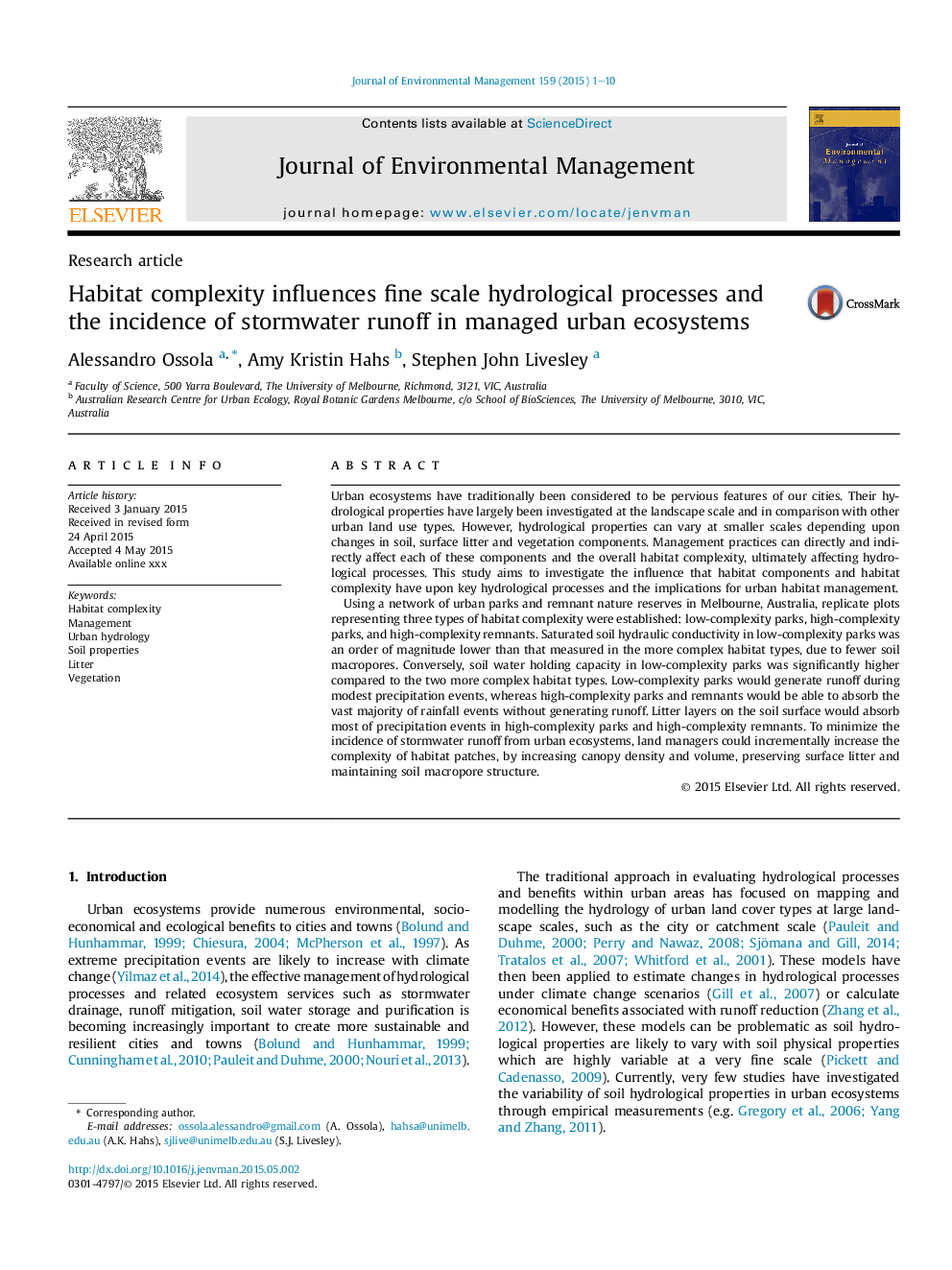| Article ID | Journal | Published Year | Pages | File Type |
|---|---|---|---|---|
| 7481945 | Journal of Environmental Management | 2015 | 10 Pages |
Abstract
Using a network of urban parks and remnant nature reserves in Melbourne, Australia, replicate plots representing three types of habitat complexity were established: low-complexity parks, high-complexity parks, and high-complexity remnants. Saturated soil hydraulic conductivity in low-complexity parks was an order of magnitude lower than that measured in the more complex habitat types, due to fewer soil macropores. Conversely, soil water holding capacity in low-complexity parks was significantly higher compared to the two more complex habitat types. Low-complexity parks would generate runoff during modest precipitation events, whereas high-complexity parks and remnants would be able to absorb the vast majority of rainfall events without generating runoff. Litter layers on the soil surface would absorb most of precipitation events in high-complexity parks and high-complexity remnants. To minimize the incidence of stormwater runoff from urban ecosystems, land managers could incrementally increase the complexity of habitat patches, by increasing canopy density and volume, preserving surface litter and maintaining soil macropore structure.
Related Topics
Physical Sciences and Engineering
Energy
Renewable Energy, Sustainability and the Environment
Authors
Alessandro Ossola, Amy Kristin Hahs, Stephen John Livesley,
